It seems there's no end to big, bad and ugly weather events. When big storms hit with wet snow, heavy rains or gale-force winds, trees suffer. Mature trees are susceptible for any number of reasons, and when an old tree gets irreparably damaged, the loss can be profound — not to mention expensive — and the landscape gets radically altered.
As homeowners know, trees are the most expensive element in a planting scheme. Landscape architects and designers need to be careful and knowledgeable and to select species not only appropriate for the setting, but that are disease resistant and strong. Many trees, like
silver maple (Acer saccharinum) have notoriously weak wood and should be avoided in a residential setting.
Here we offer some guidelines for the best types of trees to choose and how to keep them intact through stormy weather.
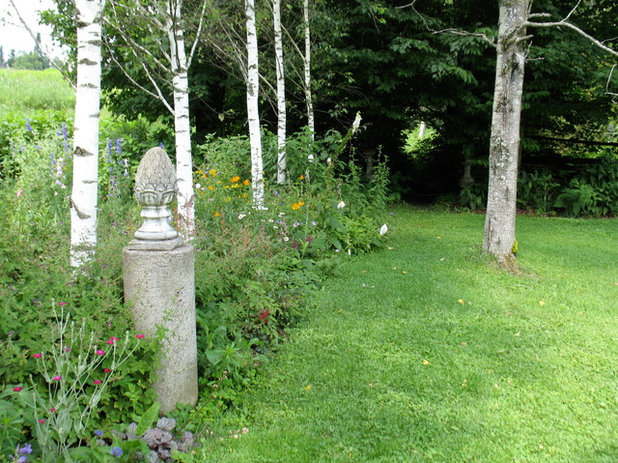 Know your trees.
Know your trees. Who doesn't love white birch?
Paper birch (Betula papyrifera) stands in a class of its own. Its ash-white bark mottled with gray brightens a woodland or forest edge, but it's a problem tree despite its beauty. Short lived, weak wooded and prone to borers, this species can break in high winds, so it shouldn't be planted near power lines or structures.
Mature birch trees that are stressed can easily lose large limbs in a heavy, early snowfall that comes at a time when leaves are still on the tree.
Other trees that have soft wood and are prone to limb damage in storms are
Bradford Pear (Pyrus calleryana) and
willow (
Salix spp). Plan for longevity as well as beauty when designing with trees. For stature, fall color and wildlife value,
red oak (
Quercus coccinea, zones 4 to 9) is a great choice for a larger property, and I'd pick
Japanese maple (Acer japonica) for a specimen tree in a suburban neighborhood.
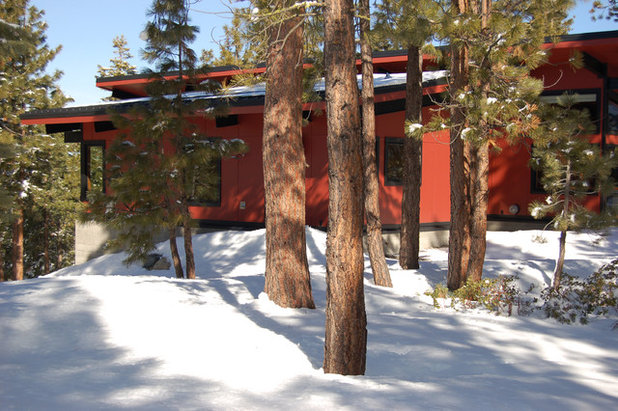
Ryan Group Architects
Potential hazards. During construction of new homes, the existing landscape gets pretty torn up; sometimes blasting is involved if a building is being erected on bedrock. Heavy equipment in the work zone means compacted soil for any tree near the construction site.
If you opt to keep existing trees close to your home (and what a lovely effect this is), know that their root systems may become weakened during the building phase. Pamper these trees with care — lots of water, pruning of broken limbs, a light dressing of compost — and keep an eye out for signs of stress following severe weather. Shallow-rooted trees can be tossed around in wind microbursts and tornadoes, causing serious damage to homes.
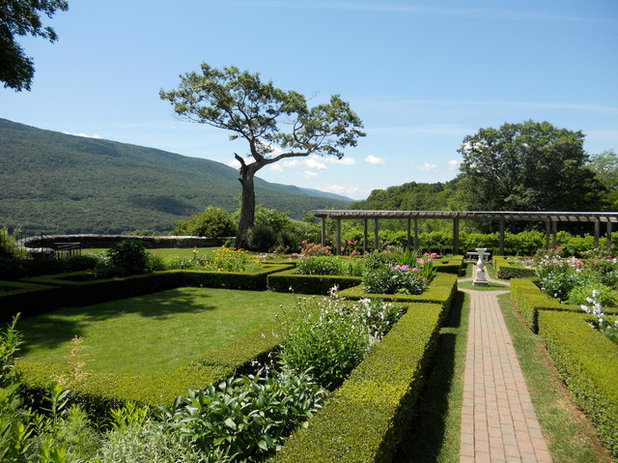 Plan for the inevitable.
Plan for the inevitable. Old specimen trees that have weathered decades of hail, wind and rain will at some point weaken and succumb to old age. If you've got a landmark tree on its way out, it may be prudent to have it removed before the next big storm comes around, to avoid damage to buildings or garden structures.
Have a professional arborist do an evaluation and help you learn about the tree and its life span. If the tree is located far from buildings, walkways and cars, it may not be a big deal if a storm knocks it down. If the tree's canopy spreads over your portico entrance or hangs down over your roof, it might be time to do some maintenance pruning or reassess the tree altogether if it poses a safety hazard.
Consider leaving the trunk standing to draw wildlife and insects if you have a naturalistic garden setting.
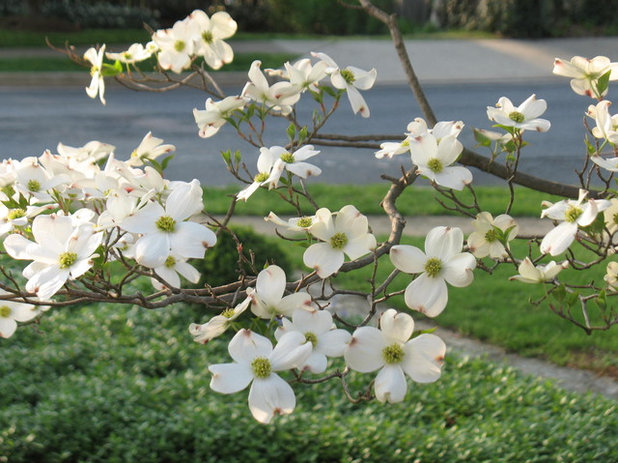
Paintbox Garden
Few trees can match
flowering dogwood (Cornus florida) when its showy bracts and flowers appear in spring. We had a really old specimen in the front yard of our Arlington, Virginia, home; it suffered through several hurricanes, nor'easters and snowstorms. When untimely wet snows hit one April when the tree was in bloom, I used the back of a spade to knock the snow off the branches to prevent splitting and breakage.
Spring-flowering trees that produce large blooms, like dogwood and magnolia, can suffer real damage in wet snow when temperatures hover around freezing — the blooms simply become too heavy. Be ready to get outside and shake branches loose to avoid permanent damage.
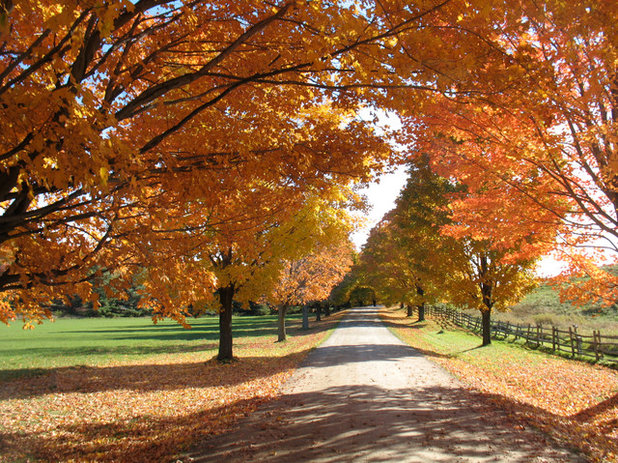
Paintbox Garden
Accept imperfection. When trees line a driveway or road, the symmetry is divine, especially when foliage turns shades of carmine and orange, as shown here. In the aftermath of strong thunderstorms or a hurricane, severe damage to one tree in an orderly composition like this can be devastating. In the event of such a loss, ask your contractor to supply a large-caliper replacement tree using a tree spade. While this is costly, it's possible to regain the look of a grand drive or broad sweep without waiting years for a replacement tree to mature.
You can also live with imperfection — accepting the gap in the planting scheme — or settle on a new tree that's within your budget.
Remember at planting time that the larger the tree, the more likely it may fail. Be sure that your contractor will replace the tree if the transplant doesn't work.
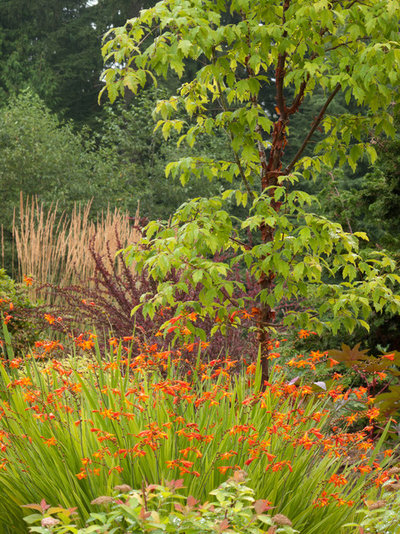
Le jardinet
Plan for the future. When a tree must be removed because it's been uprooted in a windstorm or damaged beyond repair, an opportunity can present itself for positive change: Plant a new tree. With loss comes the chance to redesign, to plant something else you've always wanted to grow, or perhaps to simplify the landscape by doing away with a tree and converting the area to a lawn or meadow.
For some, the loss of a large shade tree means that a garden is suddenly thrust into sunlight and plants must be moved to new locations. This can be an awful event, or it can be a positive experience. There is sadness and a feeling that a longtime friend is gone. And then there is the joy a new tree brings.
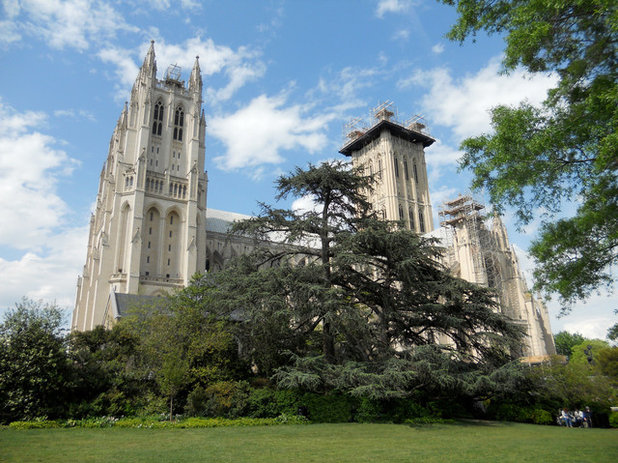
Paintbox Garden
Stewardship is crucial. Stately trees, like this beautiful Atlas cedar (
Cedrus atlantica 'Glauca') on the grounds of the National Cathedral in Washington, D.C., lend grandeur to a landscape. According to the great plantsman Michael Dirr, a mature Atlas cedar has "a beauty perhaps unmatched by any other conifer," and I have to agree. There are two of these specimen cedars at the entrance to the famed Bishop's Garden on the cathedral grounds, purportedly planted in the 1920s from saplings brought from the Holy Land.
If you have a tree of this stature, make sure it's assessed by a trained arborist every so often and make sure its root zone doesn't become compacted or compromised in any way — these cedars are simply too valuable in the landscape to take chances with them.





